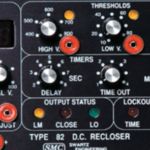The UHF Low loss leaky feeder cable is a system that offers robust communications in mining sites with the best compatibility with tunneling. The UHF system offers some of the best in underground communications through its stronger signal and robust system of cabling. The Inner conductor is made of a copper-clad aluminum solution with an outer corrugated copper tube slot. The foaming PE outer shell can protect the cable system in the world’s harshest environments.
The electronic cable is offered in packing lengths of up to 500 m per roll and 305 m per roll on the small end. The tensile strength can ensure that it will survive close contact with equipment and other dangers in a mining site.
What UHF low-loss cabling can provide is a more direct line on VHF. These systems can cut out the noise of mining environments to deliver a hard line for voice and data to be maintained in a mining site. Operational antennas with direct monitoring can ensure that the line can be maintained and regularly inspected for frays. Installing these antennas with monitoring will make sure that all the devices on your network will maintain maximum uptime. The areas of the line can be monitored for frays or another difficulty that would not be recognised in traditional maintenance.
As well as offering a system that can prevent downtime, these are devices that can offer the best support for ongoing communications. The tools with the low-loss leaky feeder cable will offer the best communications for mining equipment, data transfer, and other required safety mechanisms in a mining site. UHF is the leading choice for mining hardline communications and deep mining sites.
If you are interested in outfitting your mining environment with the best in UHF cabling, contact our team at Becker Varis today.
This post was written by Justin Tidd, Director at Becker Mining Communications! For over 15 years, Becker Communications has been the industry’s leader in leaky feeder systems mining and electrical mining communication systems. As they expanded into surface mining, railroads, and tunneling they added wireless communication systems, handheld radios, tagging and tracking systems, as well as gas monitoring.





